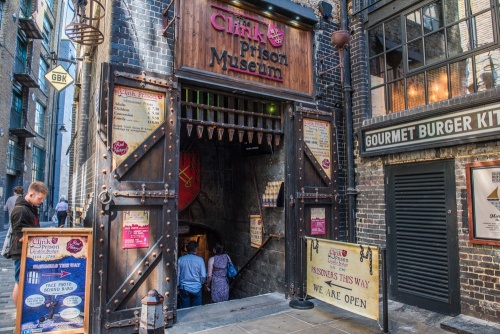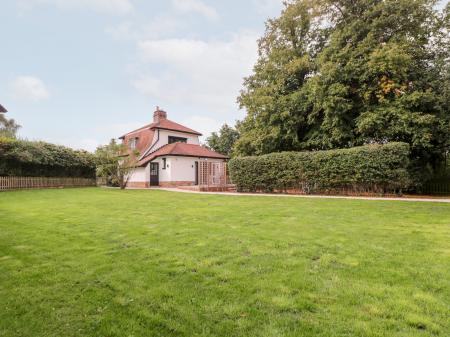
The Clink was a holding place for prisoners, attached to the Bishop of Winchester's House, or Palace, on what is now Clink Street, a short walk from Southwark Cathedral. During the Elizabethan period the Clink became the place for the Bishop to imprison those who held heretical views, but by the following century it had become primarily a debtor's prison.
The Clink Prison Museum tells the sometimes grisly tale of this notorious prison, through a series of historical tableaux and interpretive displays. Get a glimpse of what life was like for inmates in The Clink, and trace the history of the building over time. Some displays are a bit graphic and may not be suitable for younger children.
History
In 1127 Henry I granted the Bishop of Winchester an estate to be known as 'The Liberty of the See of Winchester in the Clink in the Borough of Southwark'. With the grant came a set of privileges including the right of sanctuary and the right to hold an independent court.
In practise this gave the Bishop sweeping powers, including the right to try and sentence wrongdoers in his own court. Among those most affected by the Bishop's court were the many 'stewhouses' (brothels) on Bankside, where the prostitutes and their customers could be fined or sentenced for a variety of offences.

In addition, the right of sanctuary in the Bishop's estate meant that Bankside attracted a variety of unsavory characters from the City of London across the river. The Clink did not lack for prisoners!
The early history of the Clink does not seem to have been marked by any particular mistreatment of prisoners, though conditions were not salutory! By the 13th century, however, the practice of torture and mistreatment of prisoners seems to have become much more common throughout England.
An oubliette, or deep hole, was installed in the cellar of the Clink, and special stocks and a cuckling stool were installed. This later instrument was like a long, cantilevered pole, which dunked prisoners into a small stream beside the prison.
Though the Clink was never a pleasant place, it became a quite dreadful prison, known for its harsh treatment of prisoners. The dungeons were seldom cleaned, and chains, manacles, and bolts were used to confine prisoners in great discomfort.
One theory goes that the name of the prison comes from the 'clinking' of the prisoner's chains, though a more likely explanation is that the word comes from the term for rivets or nails used to fasten the restraints.
The Clink fell out of use during the 18th century, and it was finally burned down during the Gordon Riots of 1780. The site was rebuilt, but burned again in 1814. Of the medieval Winchester House, only one wall and a great rose window can still be seen, a few steps away from the current entrance to the Clink Museum.



 We've 'tagged' this attraction information to help you find related historic attractions and learn more about major time periods mentioned.
We've 'tagged' this attraction information to help you find related historic attractions and learn more about major time periods mentioned.



